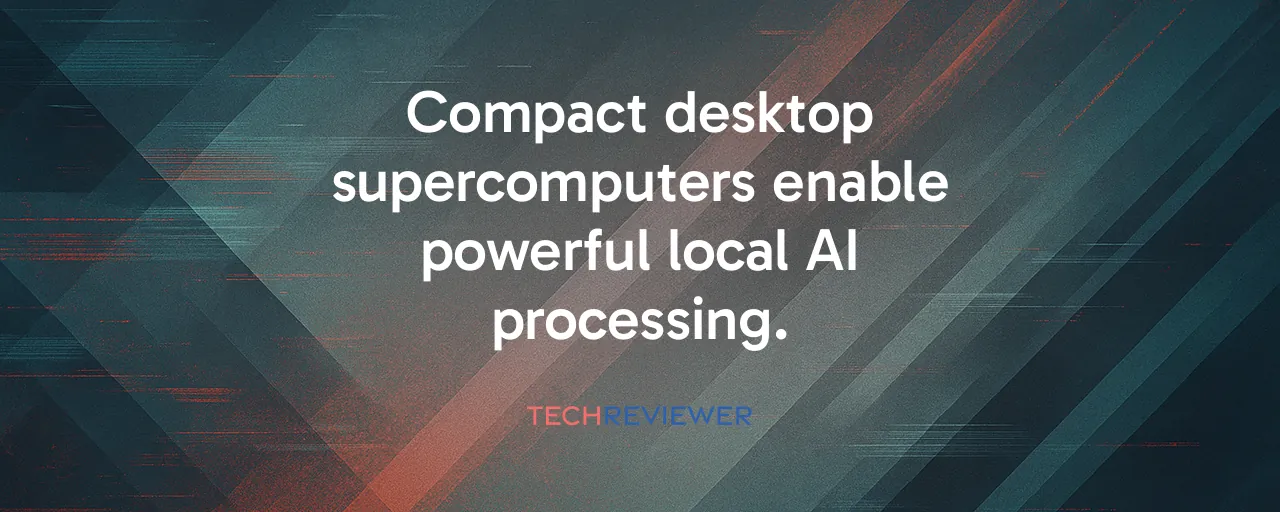A New Era for AI Development
Nvidia’s DGX Spark, a 2.6-pound AI supercomputer, hit the market on October 15, 2025, priced at $3,999 for the Founders Edition. Packing 128GB of unified memory and one petaflop of inferencing power, it lets developers run massive language models, like Llama 3.1 70B, right on their desks. This compact machine, powered by the GB10 Grace Blackwell chip, challenges the idea that cutting-edge AI work requires sprawling data centers or pricey cloud subscriptions.
For years, AI development leaned heavily on remote servers, leaving developers tethered to internet connections and cloud providers’ terms. The DGX Spark flips that model, offering researchers, students, and startups the ability to prototype and fine-tune models locally. It’s a shift that promises faster iteration, better data privacy, and a new level of creative freedom.
Why Local AI Matters Now
Running AI models on your own hardware sounds like a small change, but it carries big implications. Developers can now work offline, free from API rate limits or network lag, tweaking models like GPT-OSS 20B at 2,053 tokens per second prefill speed. This setup protects sensitive data, a critical advantage for industries like healthcare or finance where privacy is non-negotiable.
Take healthcare as an example. Organizations using local AI for medical imaging or diagnostics can comply with strict regulations like HIPAA without sending patient data to the cloud. A hospital leveraging the DGX Spark can process scans on-site, ensuring confidentiality while speeding up results. This kind of self-contained computing is a lifeline for teams handling sensitive workloads.
Empowering the Open-Source Revolution
The open-source AI community, from platforms like Hugging Face to EleutherAI, stands to gain big from the DGX Spark. Developers can now run and modify large models without racking up cloud bills or begging for GPU cluster access. For instance, testing Llama 3.1 8B models yields 7,991 tokens per second prefill, making it feasible to experiment with production-scale models at home.
A case study from the open-source world shows how this plays out. Contributors to Hugging Face’s model hub used early DGX Spark units to fine-tune language models collaboratively, sharing results without cloud dependency. This accessibility fuels innovation, letting smaller teams or lone coders push boundaries once reserved for tech giants with deep pockets.
The Trade-Offs of Desktop AI
The DGX Spark isn’t perfect. Its 273 GB/s memory bandwidth lags behind high-end GPUs like the RTX 5090, which boasts 1,008 GB/s. This bottleneck can slow down certain workloads, especially if you’re not using aggressive FP4 quantization. Thermal constraints in its compact frame may also cause throttling during long sessions, unlike the beefy cooling systems in data centers.
Cloud providers like AWS or Google Cloud argue their services still excel for massive training tasks or flexible scaling. For developers with sporadic needs, cloud APIs might be cheaper than a $3,999 upfront cost. Yet, for those running millions of inferences daily, local hardware like the DGX Spark pays off in months, not years, compared to API fees of $0.10 to $0.50 per request.
Lessons From the Field
Two real-world examples highlight the DGX Spark’s impact. In healthcare, a research hospital used it to develop diagnostic models for rare diseases, processing scans locally to meet privacy laws while iterating faster than cloud-based workflows allowed. The result? A model deployed in weeks, not months, saving time and lives.
In the open-source space, a small team fine-tuned a 70B-parameter model for natural language tasks, a feat previously out of reach without cloud credits. Their work, shared freely on platforms like Hugging Face, sparked new applications in education and accessibility. These cases show how local AI can level the playing field, giving smaller players a shot at big breakthroughs.
What’s Next for Desktop AI
Nvidia’s not stopping here. Plans for the DGX Station, powered by the GB300 chip with 784GB of memory, promise 20 petaflops of performance by late 2025. Meanwhile, competitors like AMD’s Ryzen AI Max+ 395, priced at $1,735, are heating up the market with their own unified memory designs. This race is driving down costs and boosting accessibility.
The bigger picture is a shift toward distributed AI, where developers everywhere can experiment without gatekeepers. Yet challenges remain: the $3,999 price tag excludes many, and widespread adoption could strain power grids. Still, the DGX Spark proves that AI’s future doesn’t have to live in the cloud; it can start right on your desk.
